From fiery street food in Seoul to black pork barbecue on Jeju Island, South Korea’s culinary map is as diverse as its landscape. Almost every region has its own representative food, with cuisine shaped by geography, history and tradition.
Whether you’re planning a food-focused itinerary or simply want to know what to eat where, here is a guide to the regional specialities of 10 popular destinations across South Korea.
Also read: What to Eat in Tokyo: 10 Must-Try Foods and Where to Find Them
Seoul: Gomtang & Tteokbokki
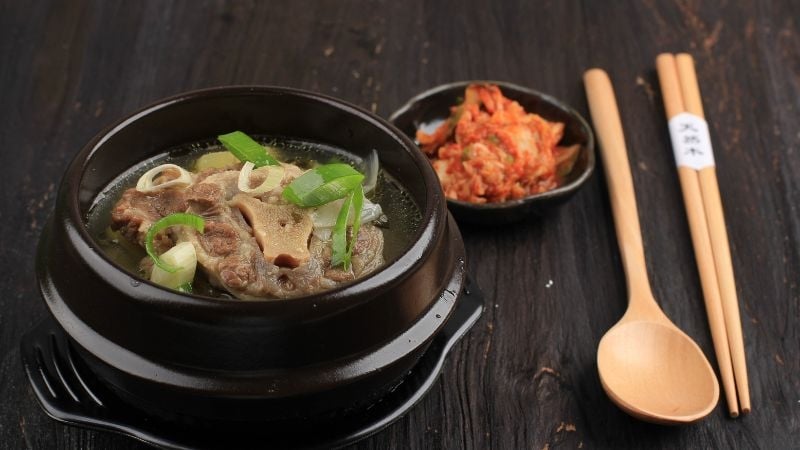
Image credit: Ika Rahma via Canva Pro
Seoul offers a bit of everything, but its enduring comfort foods speak volumes about the city’s culinary soul. Gomtang is a milky-white beef soup made by simmering bones and brisket for hours until the broth turns rich and collagen-heavy. It’s warming, subtle, and perfect after a day of sightseeing.
For something with more punch, tteokbokki is a must; chewy rice cakes drenched in sweet and spicy gochujang sauce, often eaten at street stalls in places like Myeongdong and Dongdaemun.
Incheon: Jajangmyeon & Jjamppong
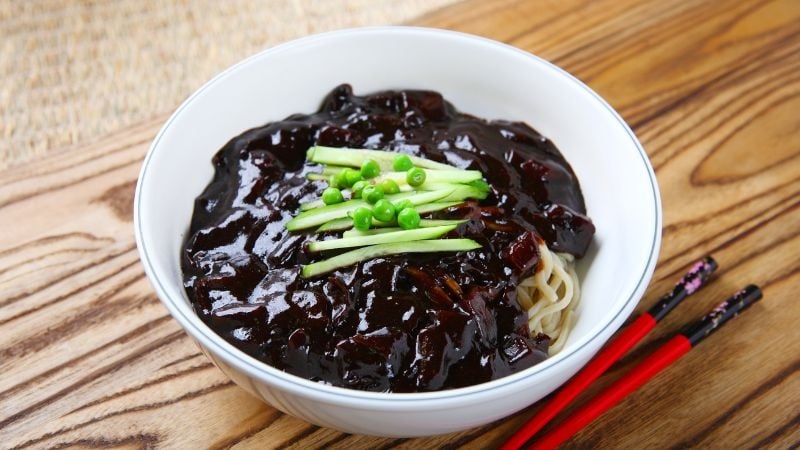
Image credit: whitewish via Canva Pro
Incheon, as Korea’s main port of entry and historic hub of Chinese immigration, is the birthplace of Korean–Chinese cuisine. Its most iconic dish, jajangmyeon, features wheat noodles topped with thick, glossy black bean sauce, diced pork and onions.
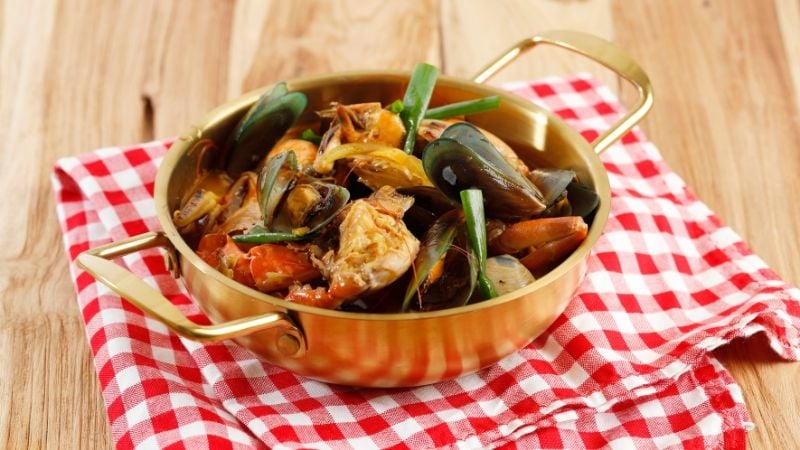
Image credit: Ika Rahma via Canva Pro
Another representative dish is jjamppong, a spicy seafood noodle soup brimming with mussels, prawns and squid in a fiery red broth. Both are staples of any visit to Incheon’s Chinatown district.
Also read: 3 Amazing Places in Incheon Totally Worth Visiting Other Than the Airport
Suwon: Wang Galbi & Baeksuk
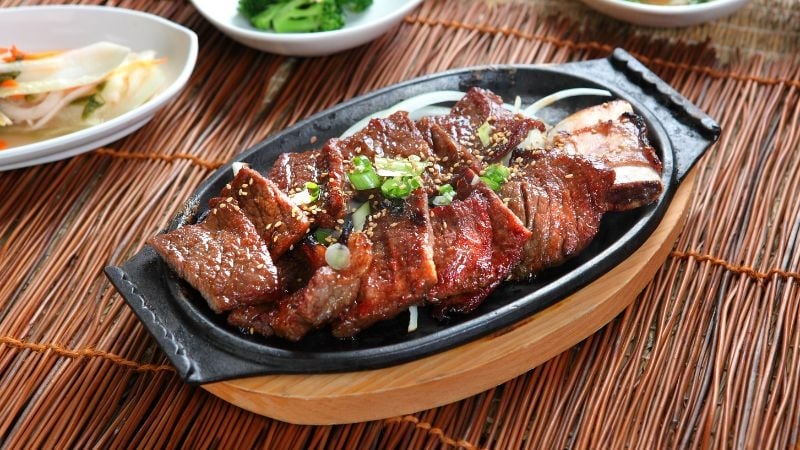
Image credit: whitewish via Canva Pro
Suwon, just south of Seoul, is famed for its wang galbi: thick beef short ribs marinated in a sweet soy sauce and grilled over charcoal. The city’s version is larger and more tender than elsewhere, offering a deeply satisfying barbecue experience.
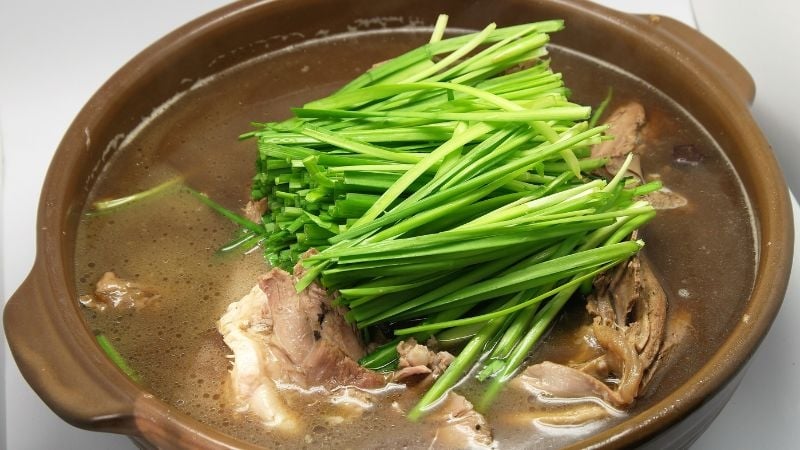
Image credit: hyun chun kim | Wikimedia
Another local dish worth trying is baeksuk, a clear chicken soup gently boiled with glutinous rice and garlic. It’s clean-tasting, nourishing, and a less intense cousin to the ginseng-heavy samgyetang.
Chuncheon: Dakgalbi & Makguksu
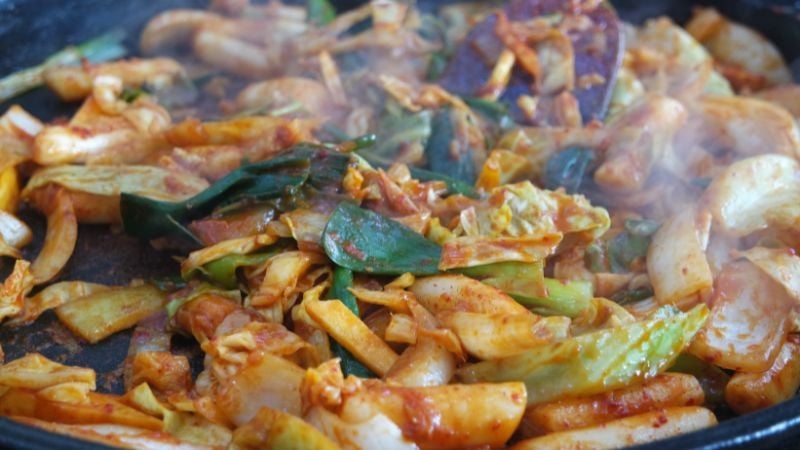
Image credit: PhotoJunction via Canva Pro
Chuncheon is synonymous with dakgalbi, a fiery stir-fry of chicken, gochujang, cabbage, sweet potato, rice cakes and perilla leaves, all cooked on a sizzling tabletop pan. It’s spicy and delicious, best enjoyed with friends and a side of makgeolli (rice wine).
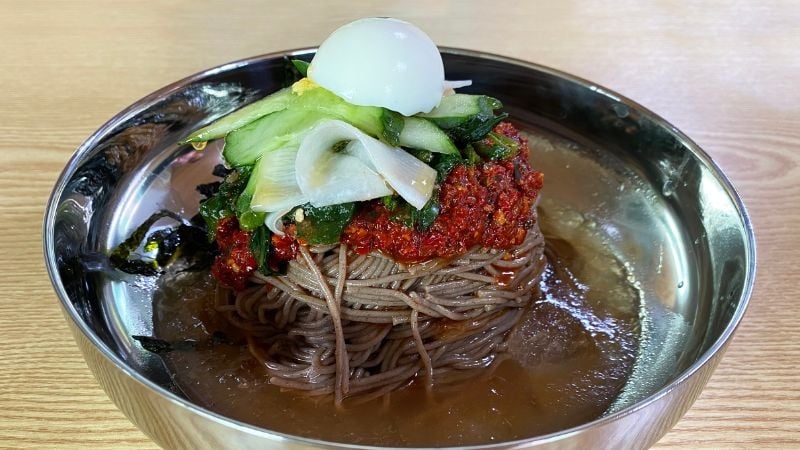
Image credit: dajinplan0 via Canva Pro
To cool down, try makguksu, a refreshing cold noodle dish made with buckwheat and served in either a vinegary broth or spicy sauce. The contrasting flavours are part of what makes Chuncheon such a culinary gem.
Gangneung: Soft Tofu Stew & Hwangtae
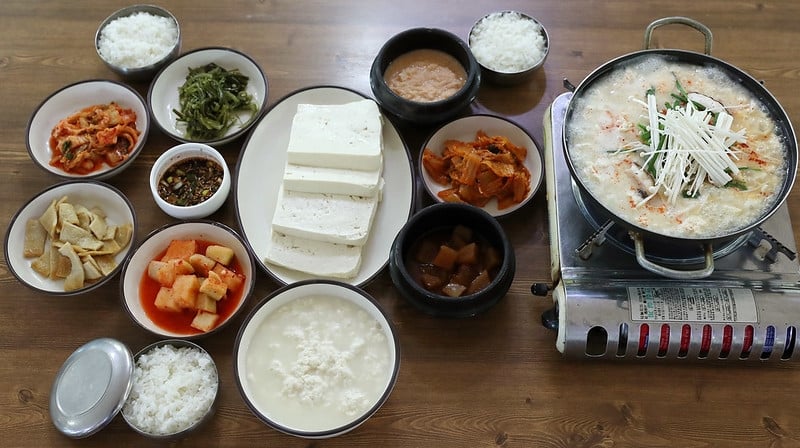
Image credit: Republic of Korea | Flickr
Gangneung’s coastal charm is reflected in its food. The city is best known for Chodang soondubu, a silky soft tofu made even softer with use of natural seawater. Typically served in bubbling earthenware with clams, chilli and egg, it’s a delicate yet comforting dish.
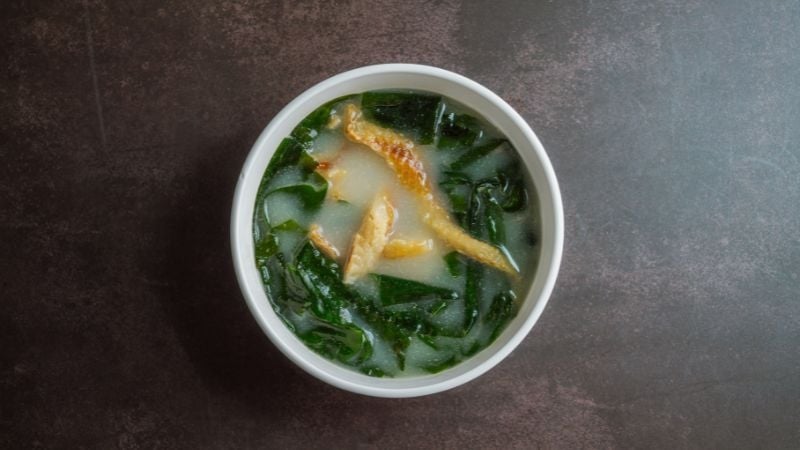
Image credit: CHALLA via Canva Pro
Gangneung is also famous for freeze-dried hwangtae, yellow dried pollock that’s hung and frozen repeatedly in mountain air before being rehydrated and grilled or used in soup. The result is a chewy, savoury fish that locals adore.
Jeonju: Bibimbap & Kongnamul Gukbap
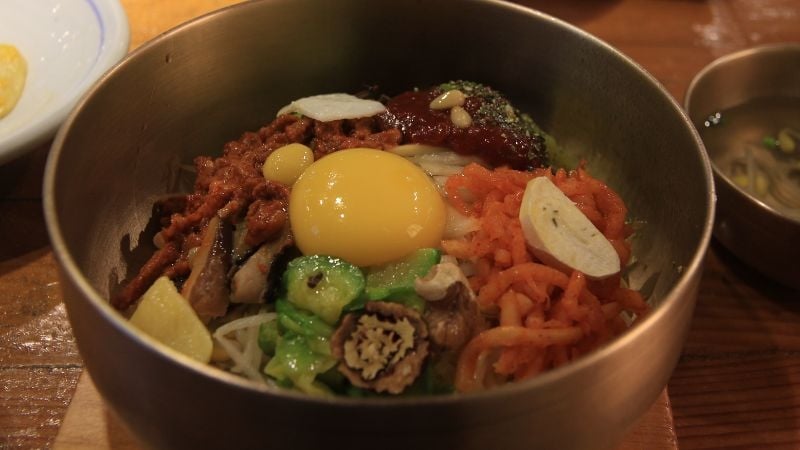
Image credit: simon_photos via Canva Pro
Jeonju is widely considered the food capital of Korea, and Jeonju bibimbap is its crown jewel. The dish brings together steamed rice, seasoned vegetables, beef, gochujang, and a raw egg yolk, served in a brass bowl and mixed at the table. The ingredients are often locally sourced, with a special emphasis on quality and presentation.
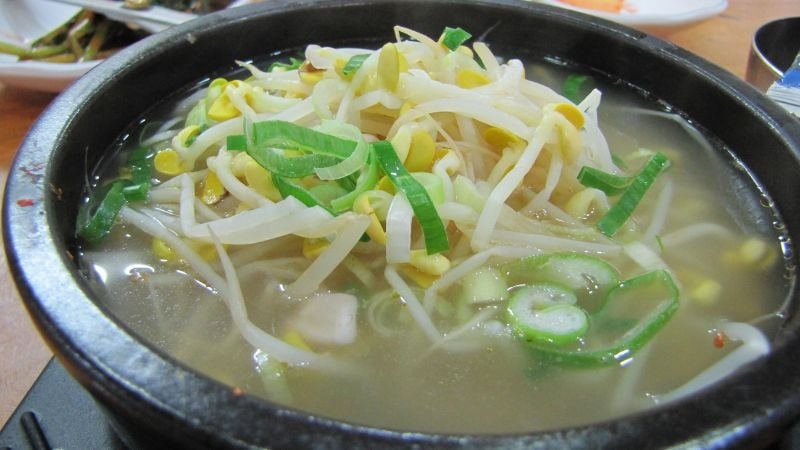
Image credit: Lee Eunyoung | Wikimedia
Another Jeonju staple is kongnamul gukbap, a simple but flavourful soybean sprout soup with rice, often enjoyed as a restorative breakfast after a night out.
Gwangju: Tteokgalbi & Oritang

Image credit: Duy Doan via Canva Pro
In Gwangju, tteokgalbi, grilled short rib patties shaped like rice cakes, reflects the city’s knack for turning humble ingredients into luxurious dishes. Traditionally served alongside royal-style meals, these juicy patties are made by mincing marinated beef and grilling it to caramelised perfection.
Gwangju is also celebrated for oritang, a clear, gently simmered duck stew cooked with vegetables. It even has its own dedicated “Duck Cook Street” in the city’s Buk district, where restaurants serve this comforting broth.
Andong: Jjimdak & Heotjesabap
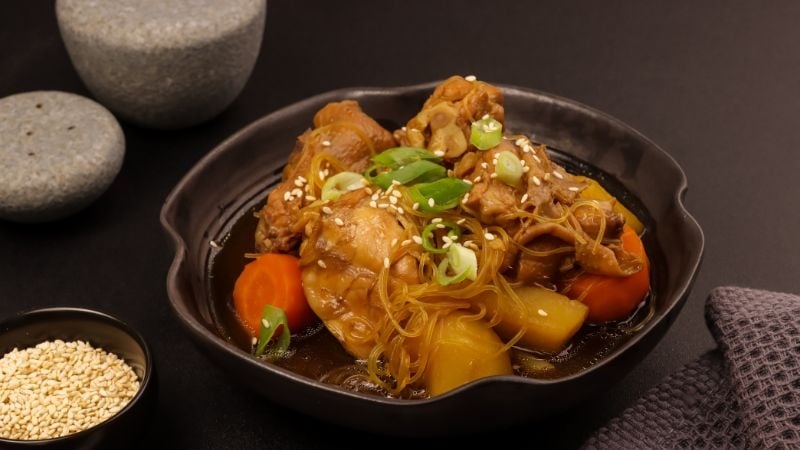
Image credit: Sri Widyowati via Canva Pro
Andong, steeped in Confucian heritage, has a cuisine rooted in ceremony and comfort. Andong jjimdak is a deeply savoury braised chicken dish cooked with soy sauce, glass noodles, potatoes and a medley of vegetables.
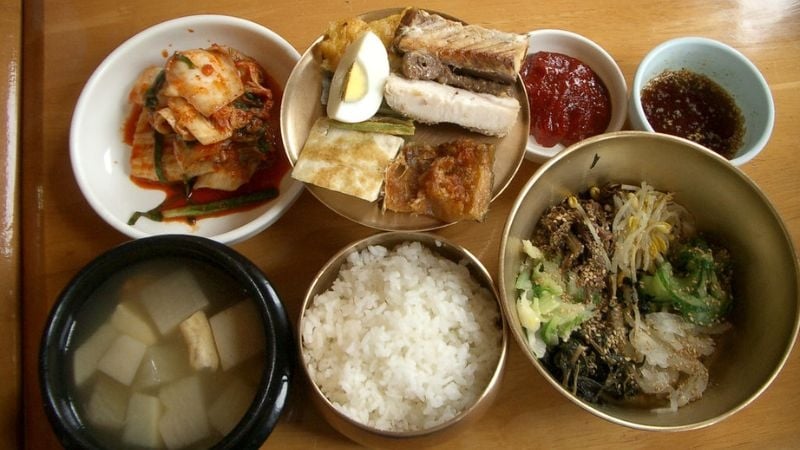
Image credit: ebifry | Wikimedia
Heotjesabap is a traditional Andong dish that closely resembles bibimbap, but with a unique cultural twist. Like bibimbap, it features rice topped with various seasoned vegetables, thinly sliced meats, and garnishes, but instead of gochujang, it’s mixed with a light soy-based sauce (ganjang), giving it a more delicate, savoury flavour.
Busan: Dwaeji Gukbap & Milmyeon
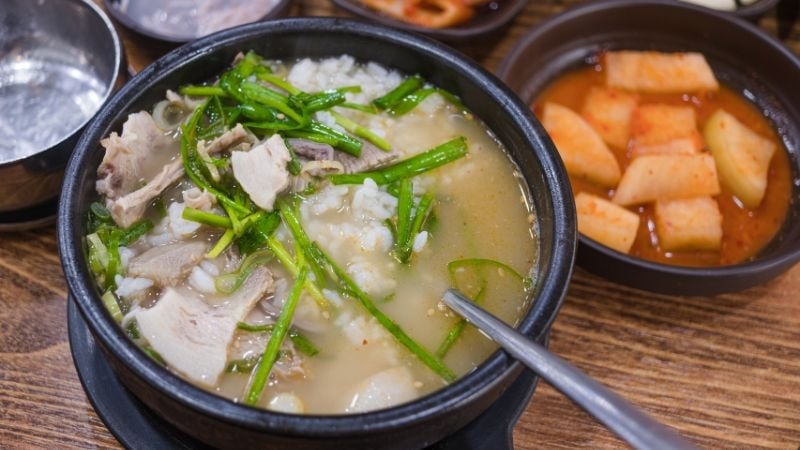
Image credit: colinhui via Canva Pro
A staple in Busan, dwaeji gukbap is a hearty pork and rice soup made with a milky, slow-simmered broth. It’s typically served with thin slices of pork, steamed rice, chopped chives and a side of kimchi, offering a deeply satisfying meal.
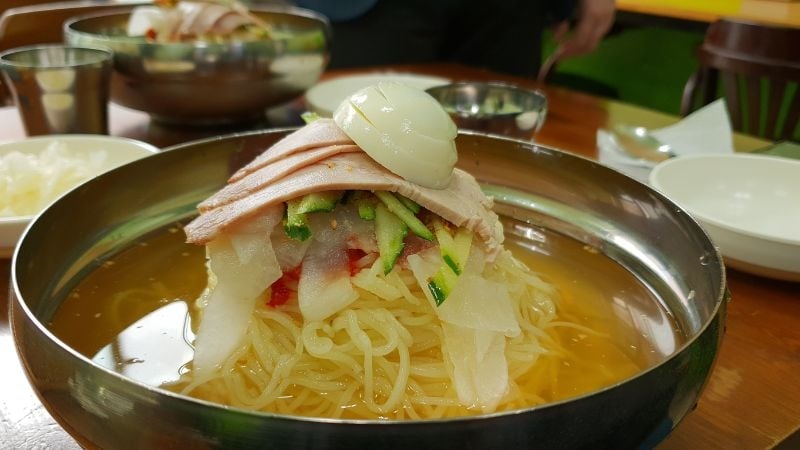
Image credit: CYAN | Wikimedia
For something lighter in the summer, locals turn to milmyeon, chewy wheat noodles served in an icy broth or mixed with a spicy sauce. Both dishes showcase Busan’s rich culinary heritage, where simple ingredients are transformed into deeply flavourful and satisfying meals.
Also read: Beyond Busan: Must-Visit Day Trips in Southeast Korea You’ve Never Heard Of
Jeju: Black Pork & Abalone Porridge
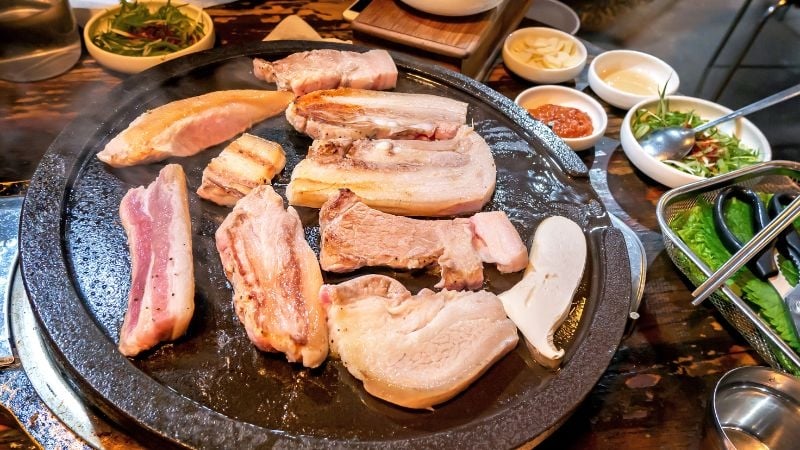
Image credit: ROMIXIMAGE via Canva Pro
Jeju Island has a food culture unlike anywhere else in Korea. Its famed black pork, from pigs raised on the island, is prized for its rich flavour and firm texture, especially when grilled over charcoal and dipped in salted anchovy sauce.
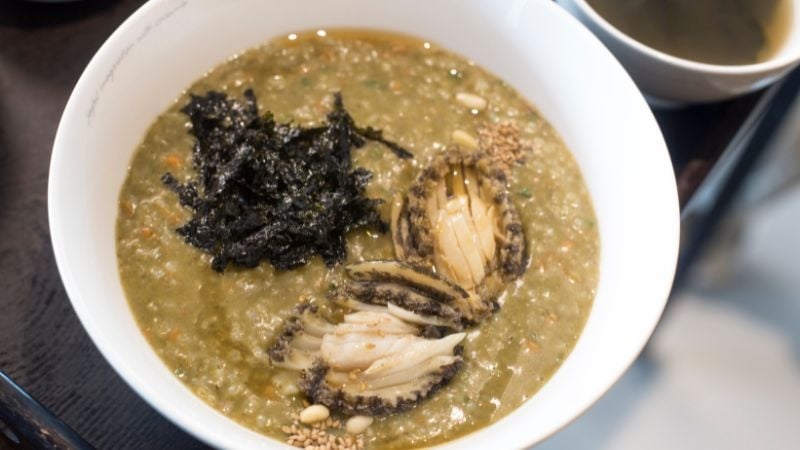
Image credit: bong hyunjung via Canva Pro
Another local delicacy is jeonbokjuk, a mild porridge made from fresh abalone caught by the island’s legendary haenyeo (female free-divers). It’s a dish that captures the essence of Jeju: simple, clean, and tied to the sea.
Also read: A Culinary Adventure: 10 Cities Around the World for Foodies
Feast away
Exploring regional food in South Korea is an extremely satisfying way to travel the country. Each city offers its own take on taste, tradition and technique.
Whether you’re slurping noodles in Incheon, sizzling galbi in Suwon or unwinding with tofu stew in Gangneung, one thing’s for certain: there’s no better way to discover Korea than through your stomach.




